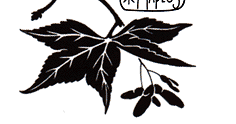 |
 |
 |
 |
 |
Summer heat and draught problems:
Water deeply twice a week; water more often if it is a newly planted tree or a container-grown tree. Leaf tip burn is unsightly, but not a cause for panic. It is most often a result of too much water, too little water, an underdeveloped root system (as a newly planted tree would have), or too much fertilizer, especially if a salt based fertilizer is being used. Afternoon shade and good watering practices help, but in some conditions you may have to live with it for the rest of the season. Under extremely stressful conditions your maple may drop all its leaves. Do not despair. Maples have a secondary set of leaves waiting for just such a time. The tree is protecting itself and telling you it is not getting enough water. When your tree is feeling stressed do not try to fertilize it into feeling better. Do not fertilize it at all. Fertilizer is a stimulant and your sick tree does not need a stimulant. Instead, feed it kelp meal or something similarly rich in trace elements. Also, if your tree is stressed, be on the lookout for other problems such as insects or disease to which it will be more susceptible at this time. Catch these problems early so you can deal with them immediately and prevent a spiral of decline.
Fall is a time of great opportunities:
Planting in the fall can be very rewarding. Try to plant at least 4 to 6 weeks before the ground freezes. The roots get a chance to establish themselves, and, come spring, the tree will be ready to put on new growth. If there is no rain be sure to water until the ground freezes and in the early spring. Mulching is always a good idea for fall; it will help insulate the roots for winter and protect their early spring growth.
Winter care of your Japanese Maples:
After severe winters many people find branches snapped out of their dissectums. To help prevent this, try not to let branch tips freeze to the ground; when they do they lose the capacity to move and give and the burden of heavy snow on the top center can cause branches to crack or even break. It is a good idea to remove snow accumulation from the treetops as soon as possible. At the same time, be cautious of a coat of ice while you are removing the snow. Do not try to remove the ice as well. If there is ice on the branches, the branches themselves are frozen. Tampering with them at this point can result in whole branches breaking, the tips snapping off and the bark being badly damaged. To minimize the burden of winter hazards, remove dead leaves that cling to the ends of branches before snow or ice come and do not plant where snow or ice will slide off a rooftop and land on the crown of the tree.
Spring attention:
Damp, hot springs can be equally dangerous due to the fungal problems they bring
such as Botrytis, Pseudomonas and Fusarium. Good air
circulation, soil drainage and sanitation practices all help prevent these problems.
|
 |
|
Eastwoods Nurseries 634 Long Mountain Road Washington, VA 22747 540-675-1234 maples@japanesemaples.com © Eastwoods Nurseries 2021, all rights reserved. |
||